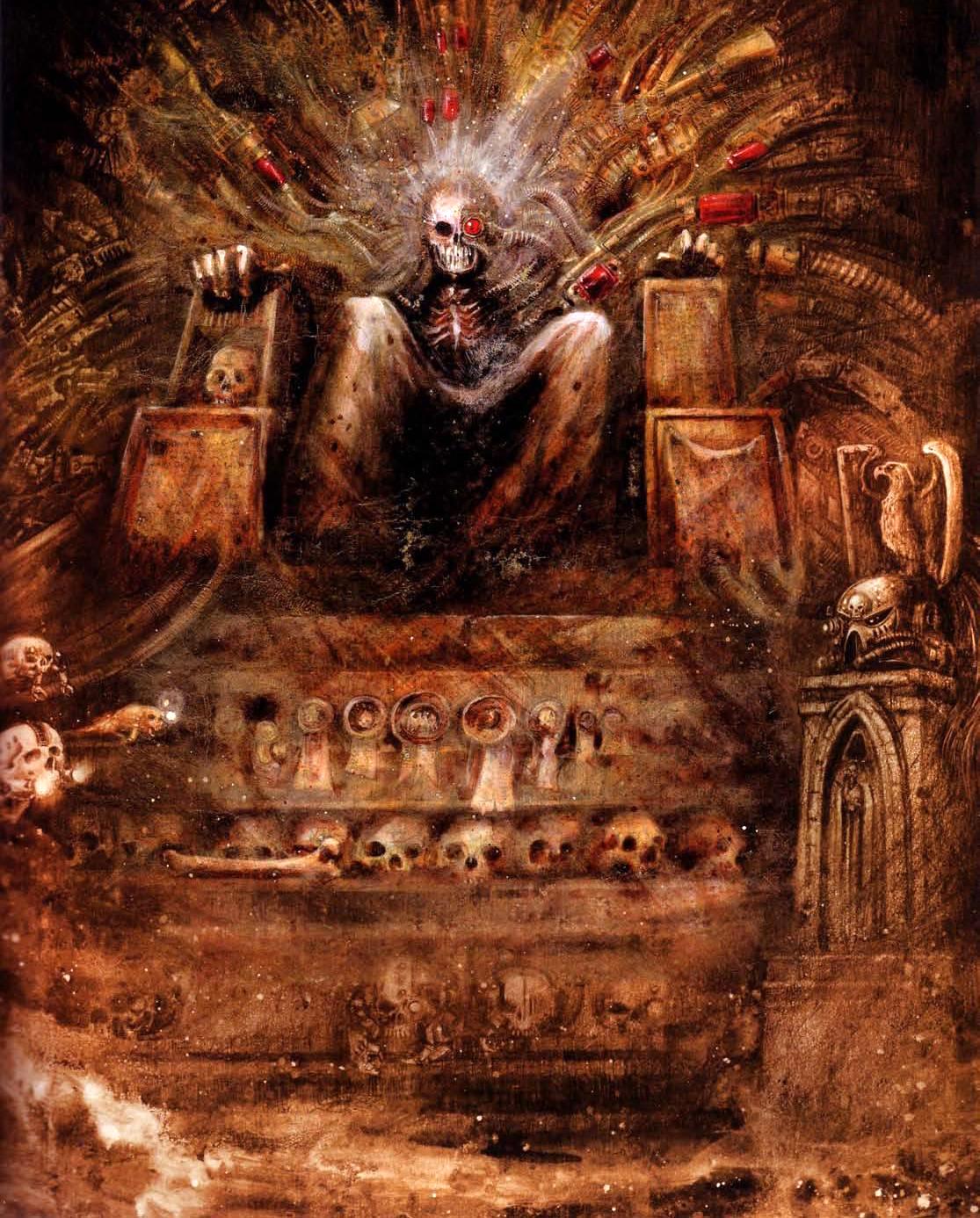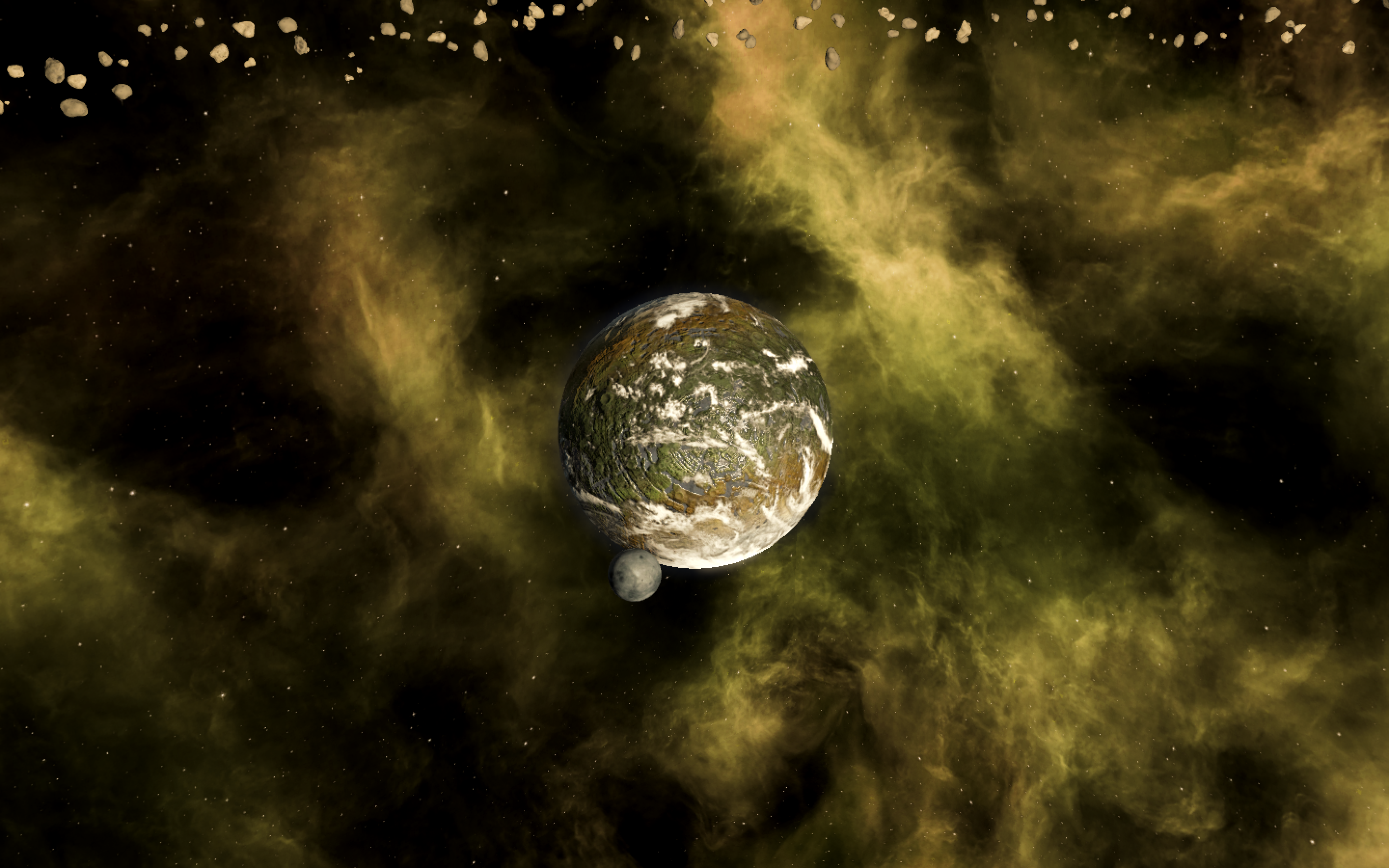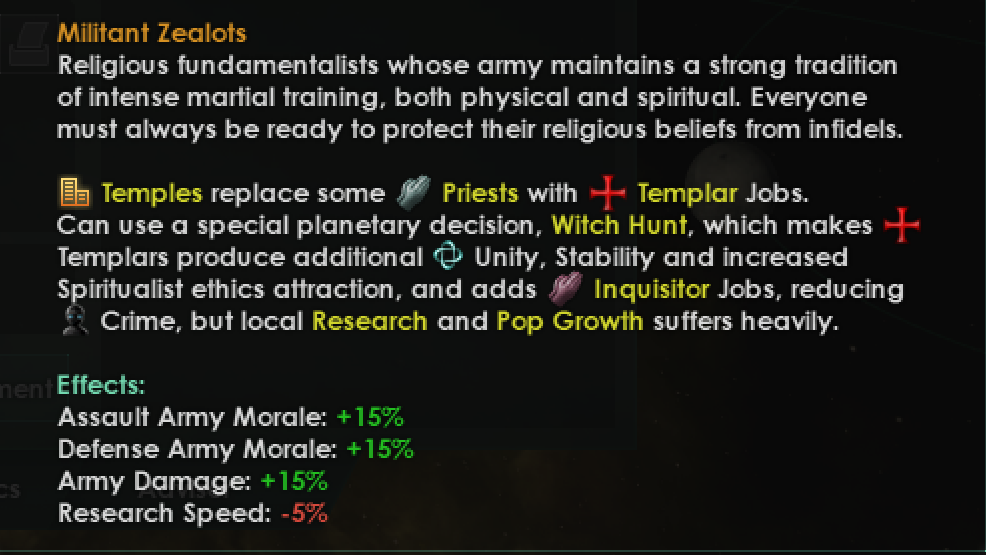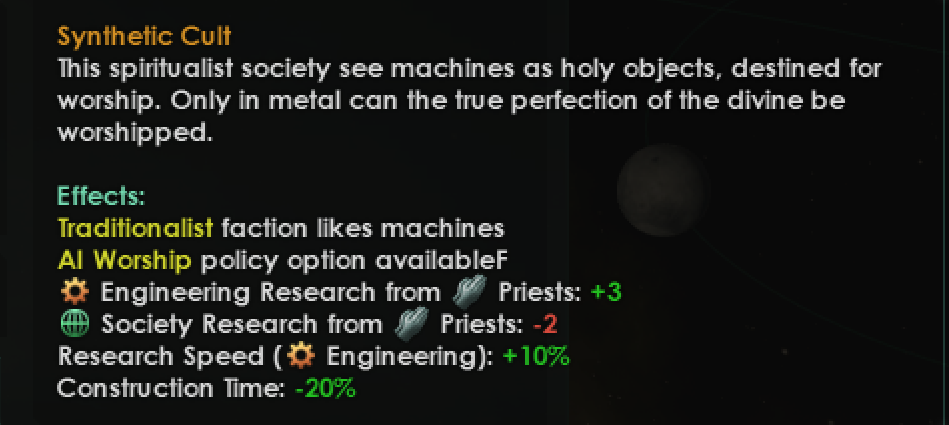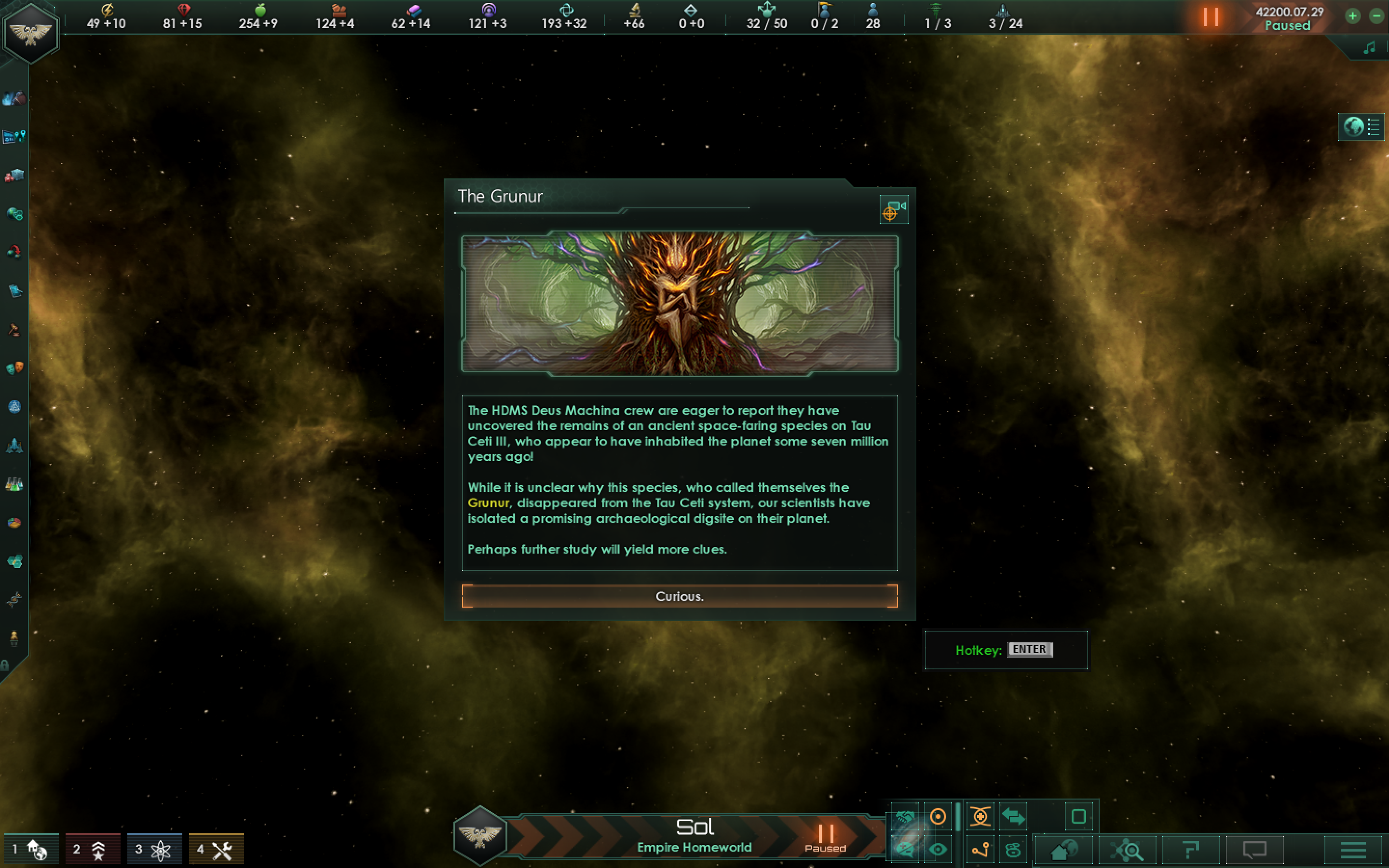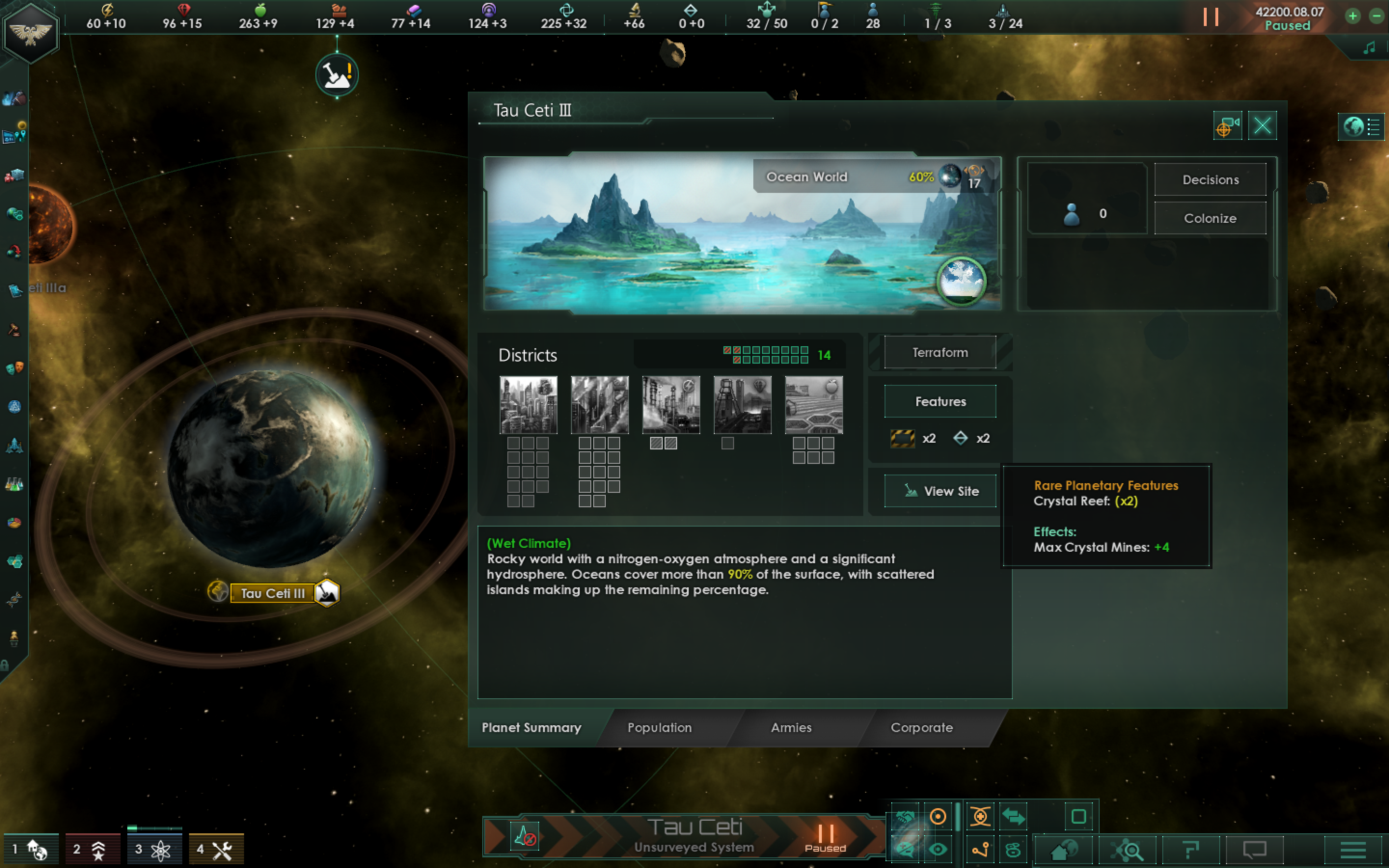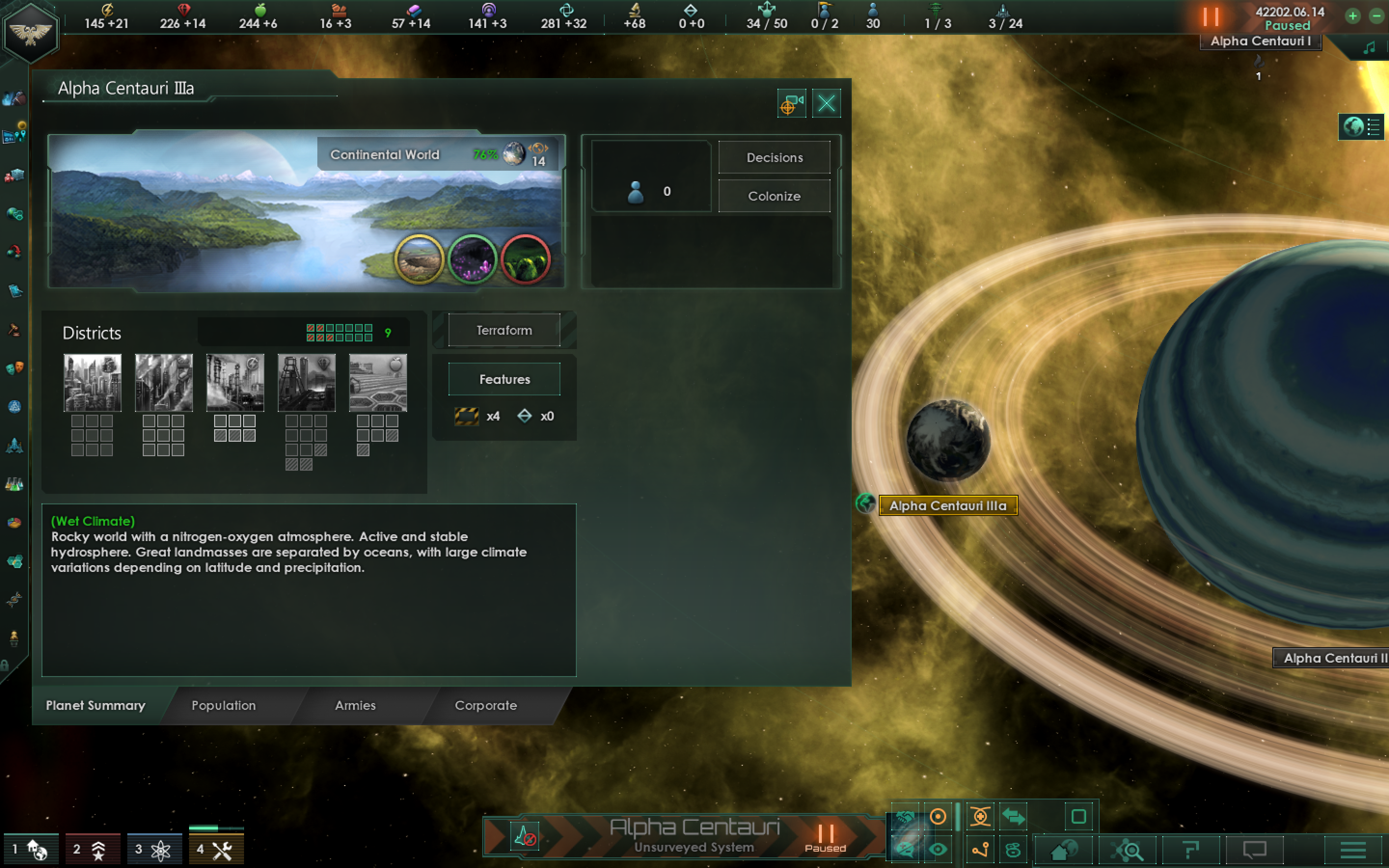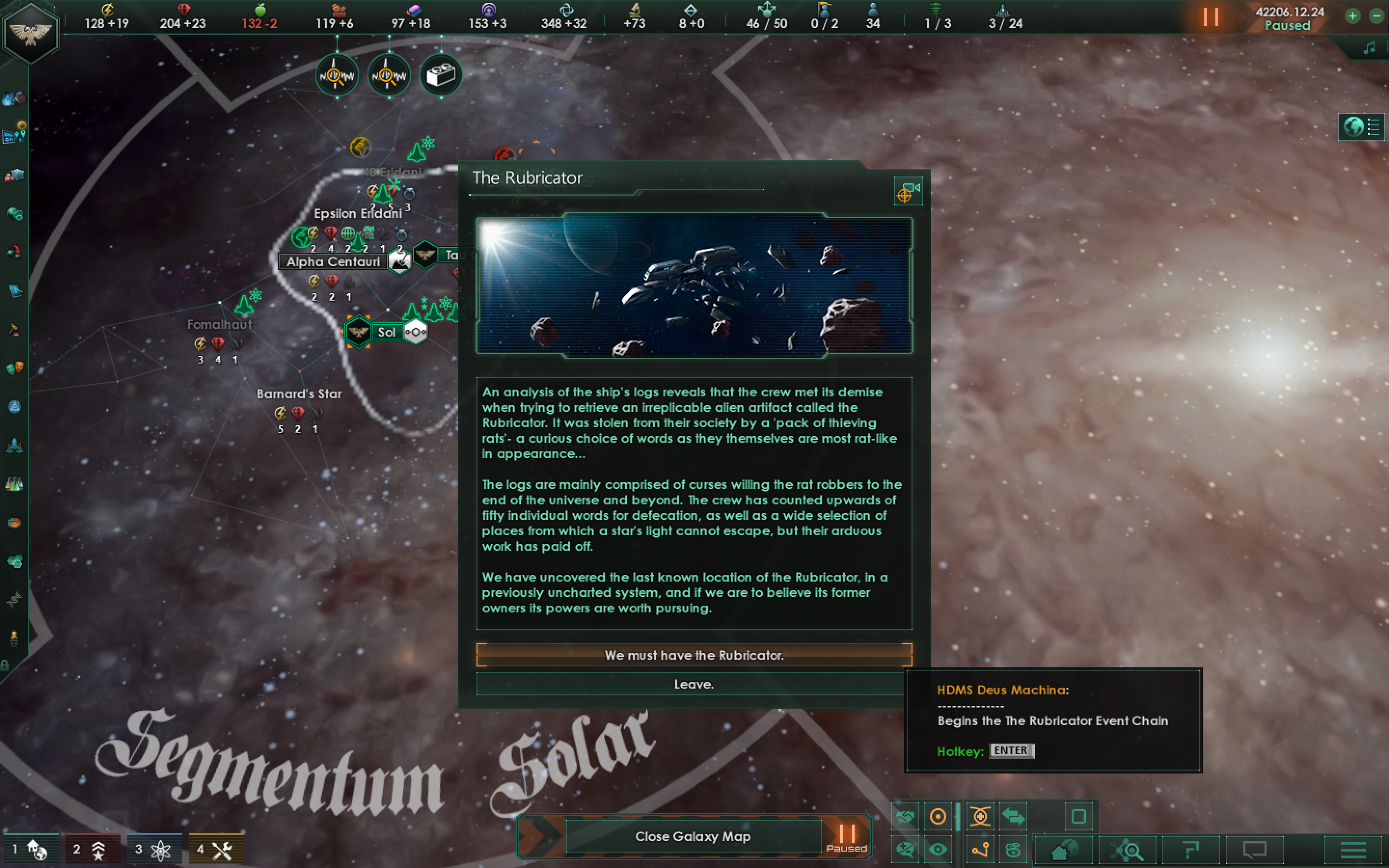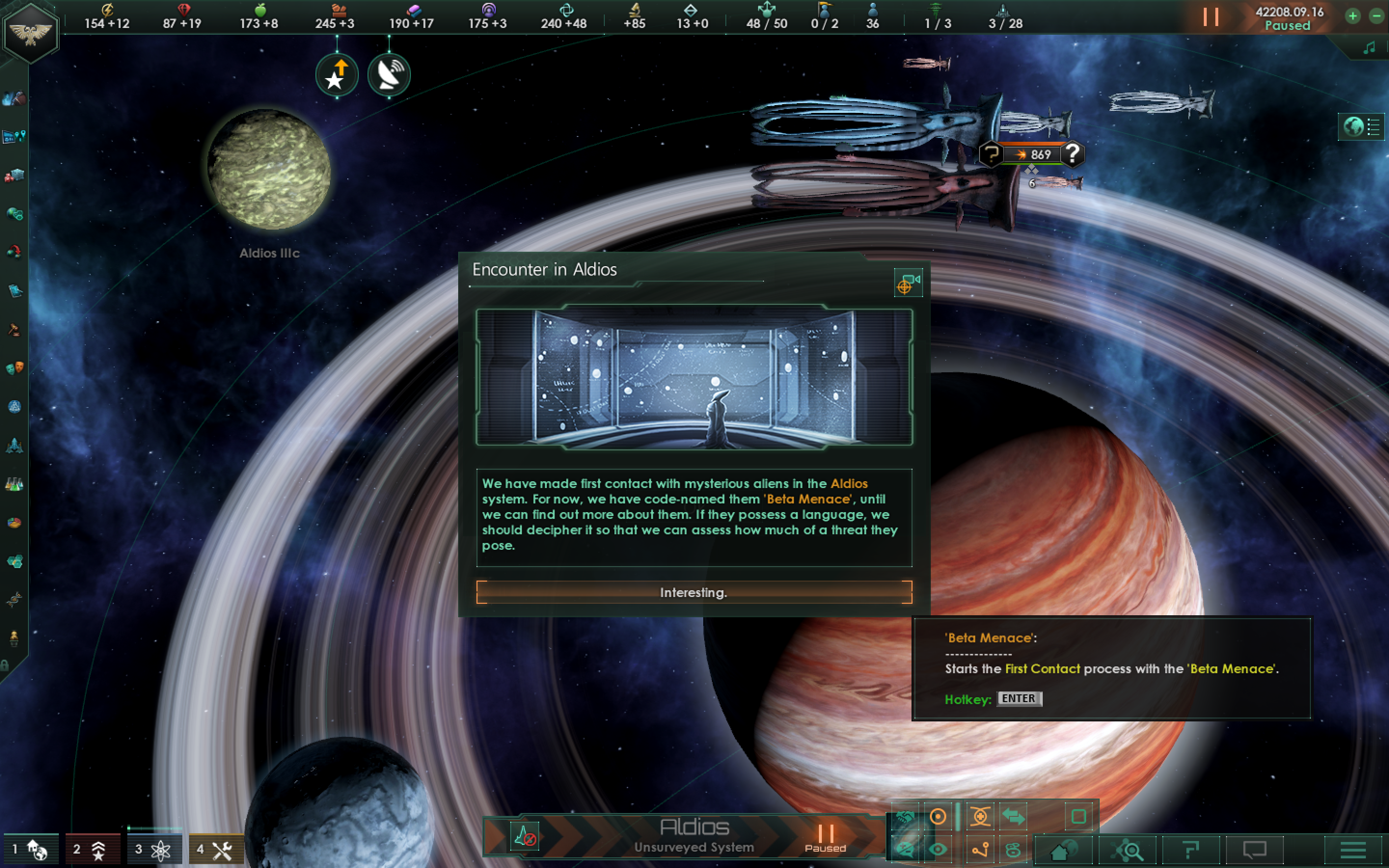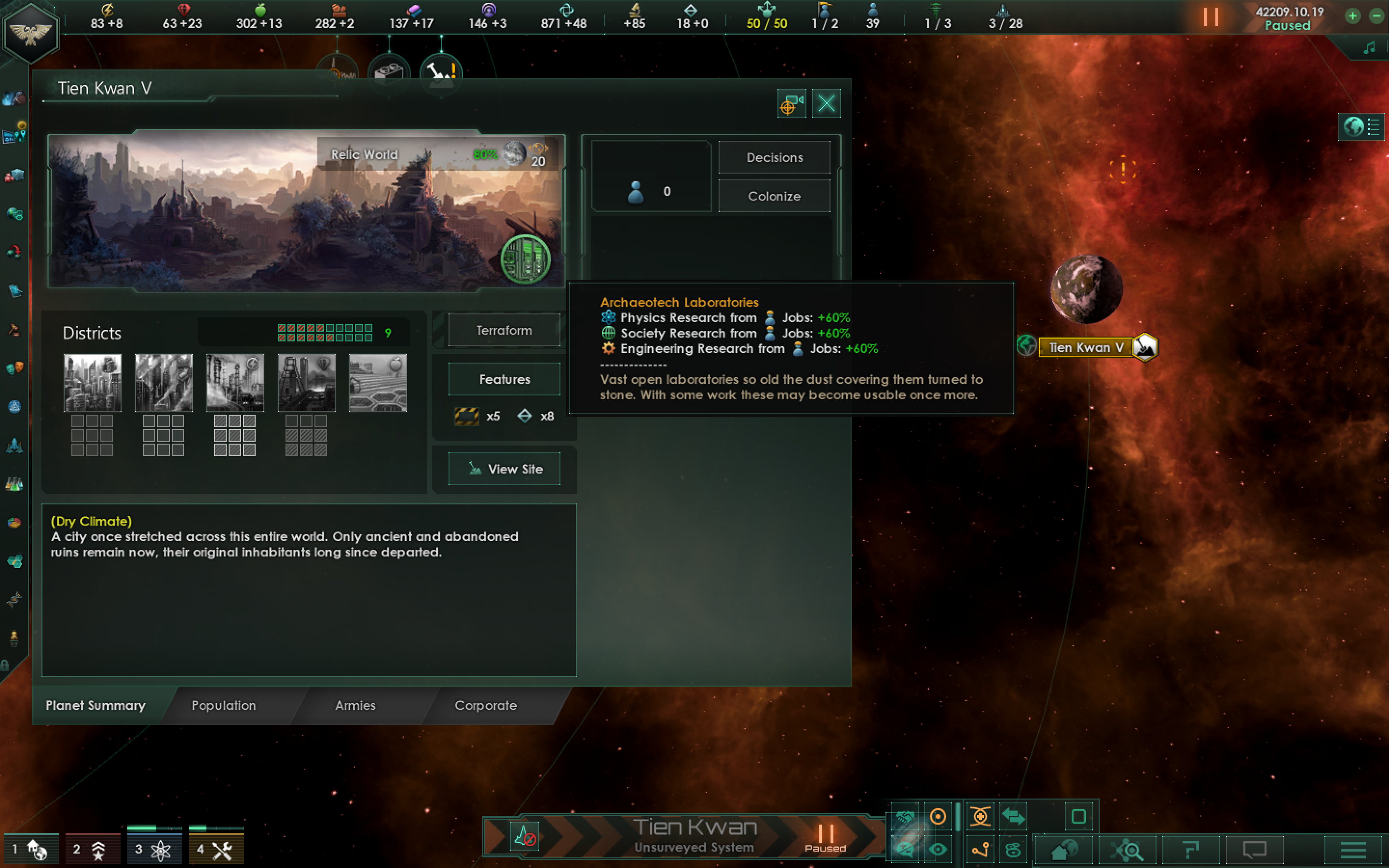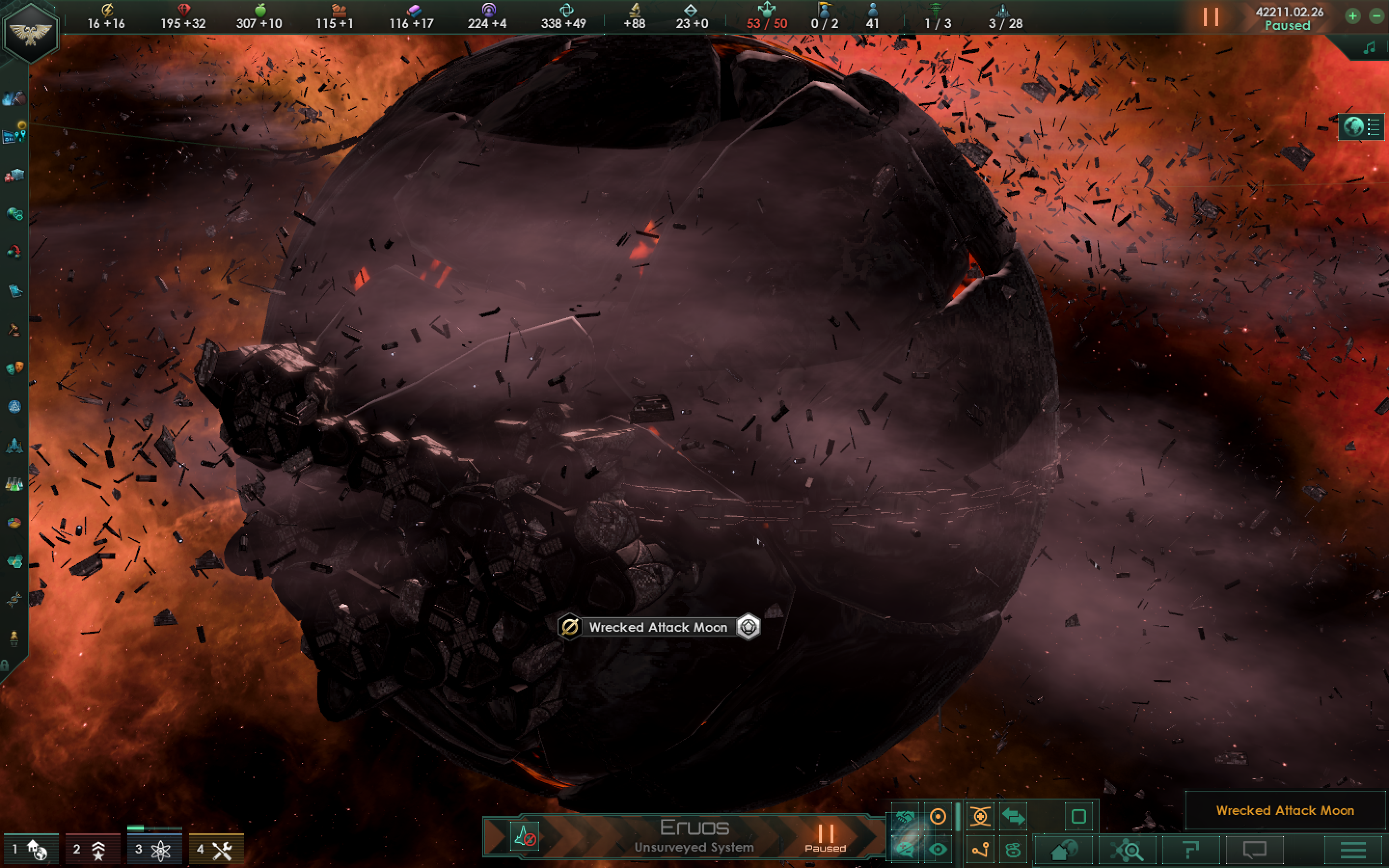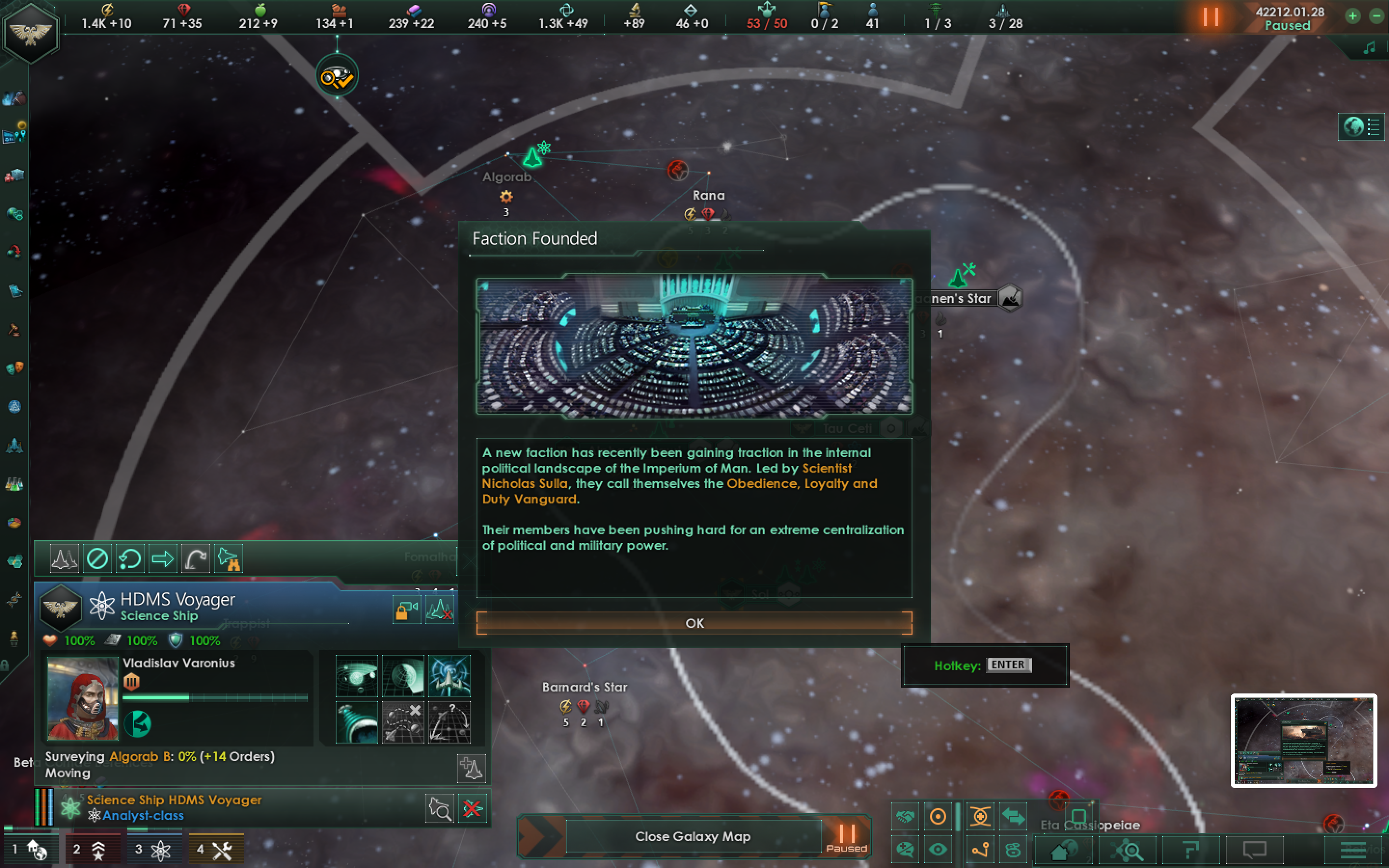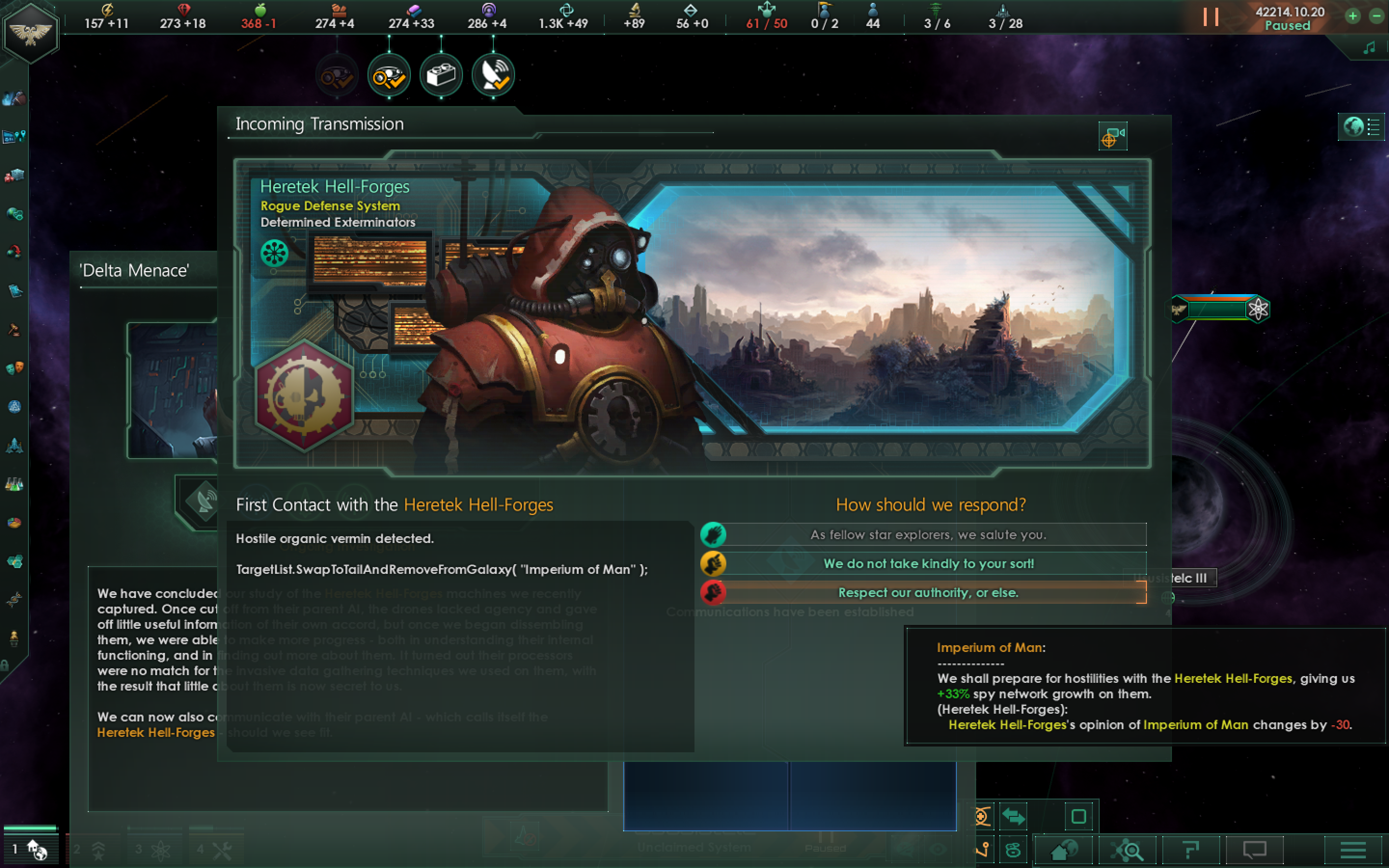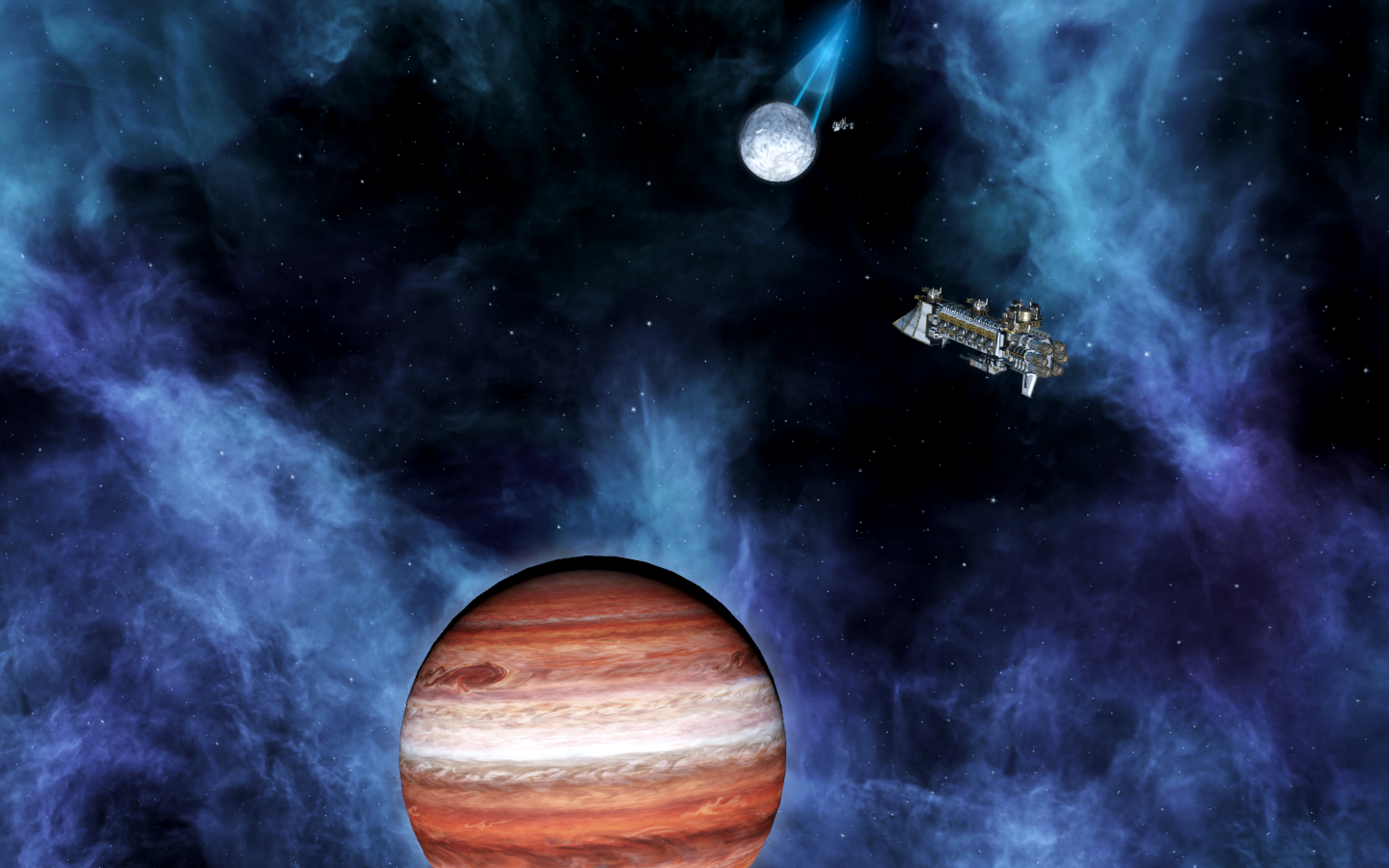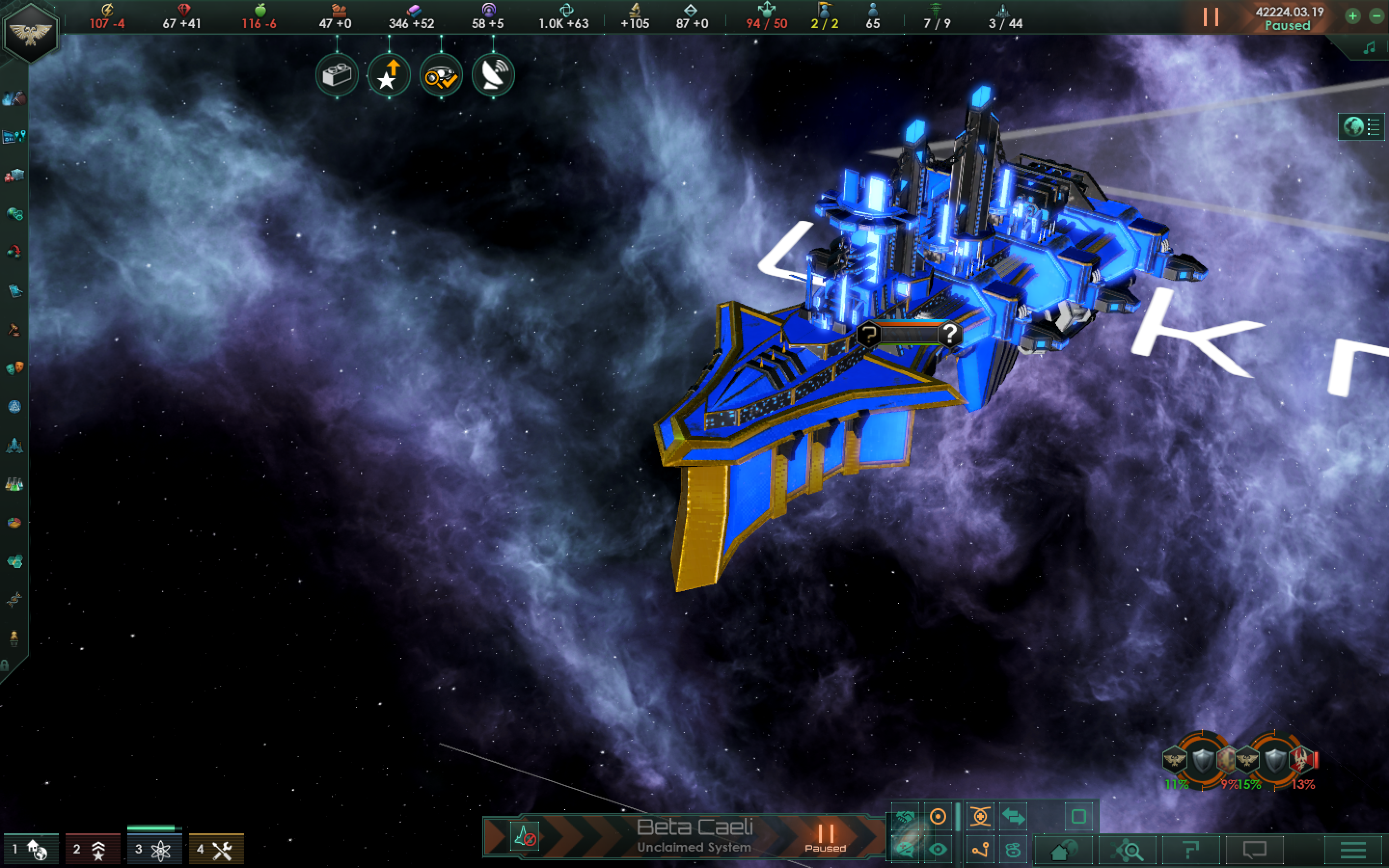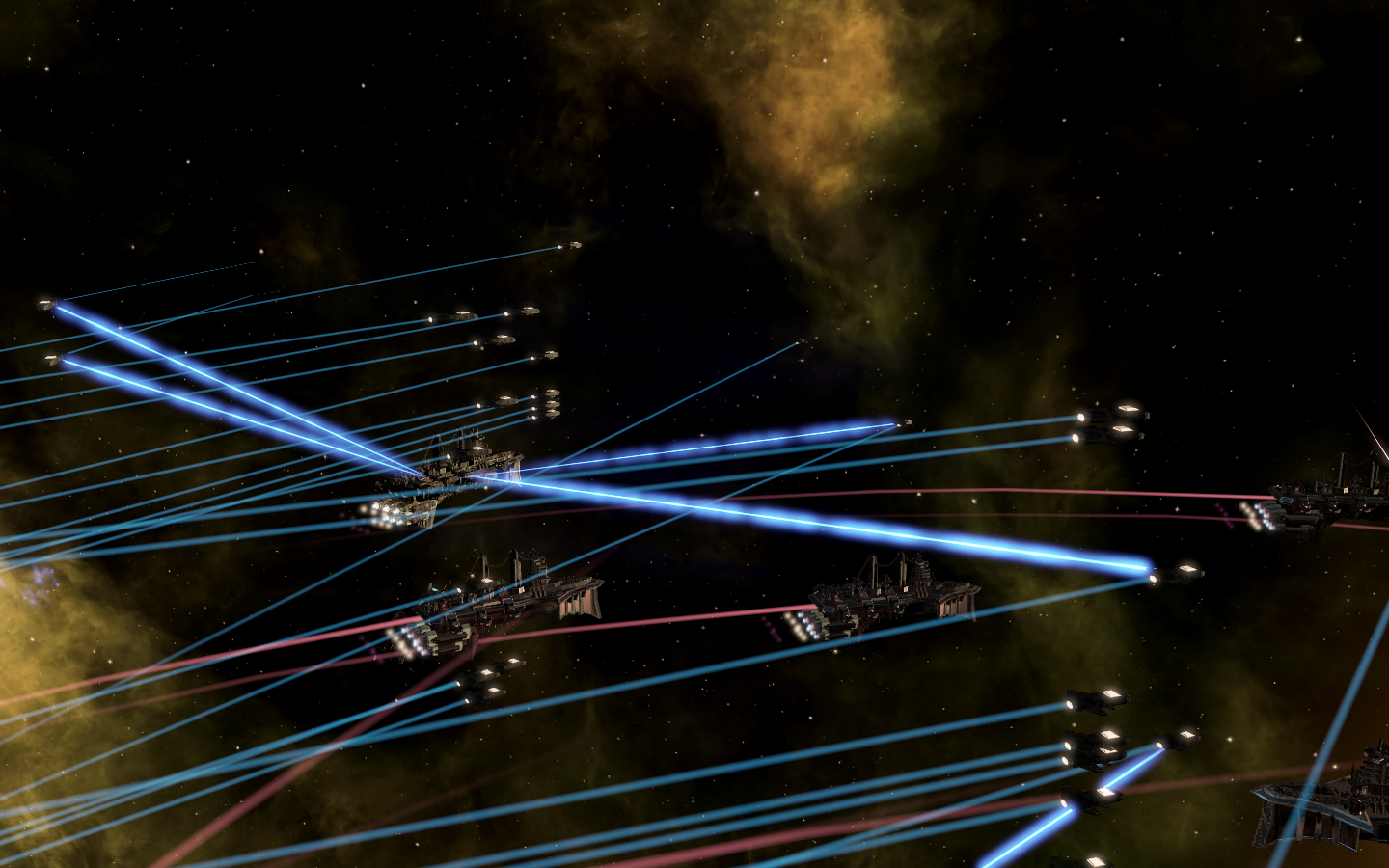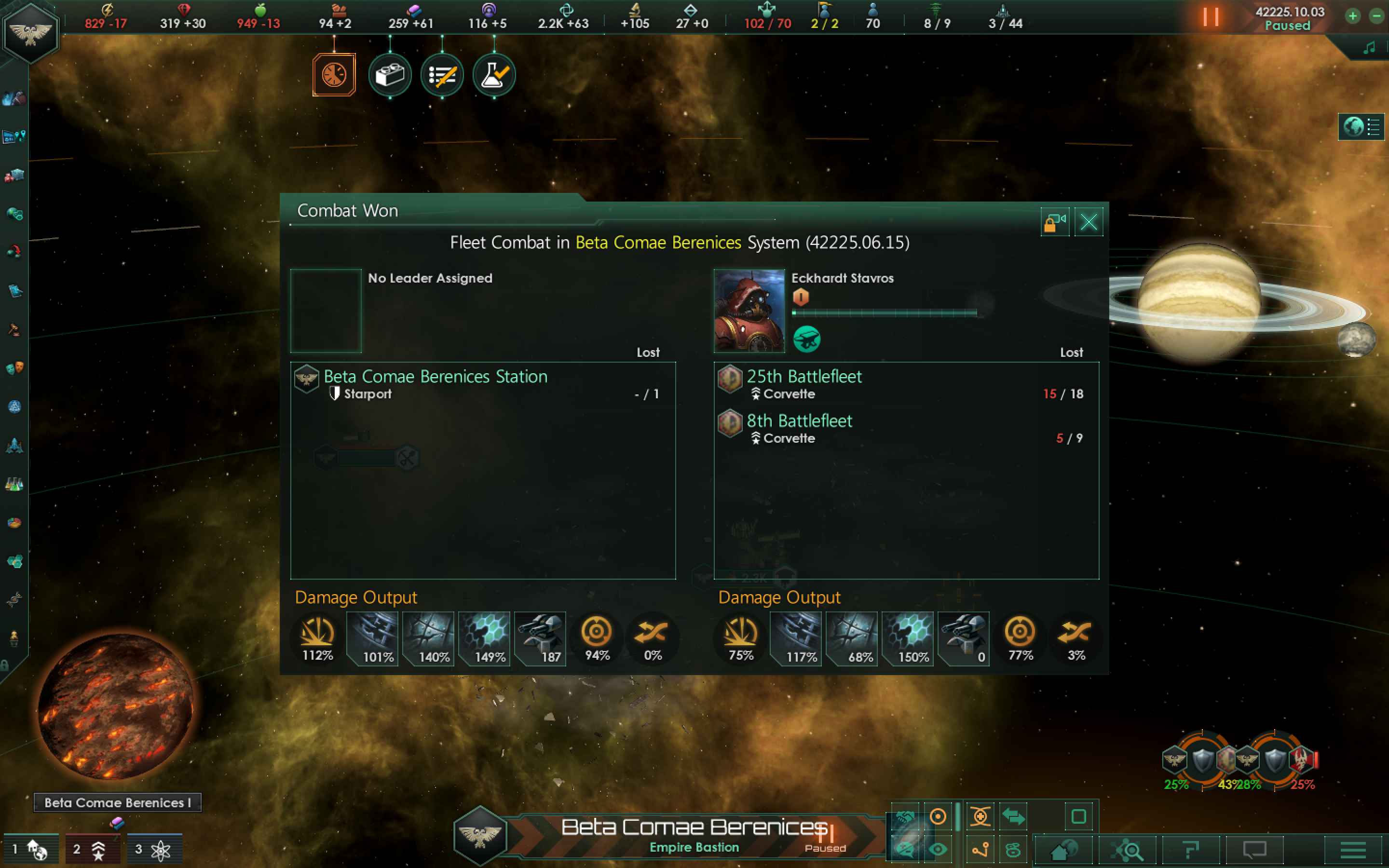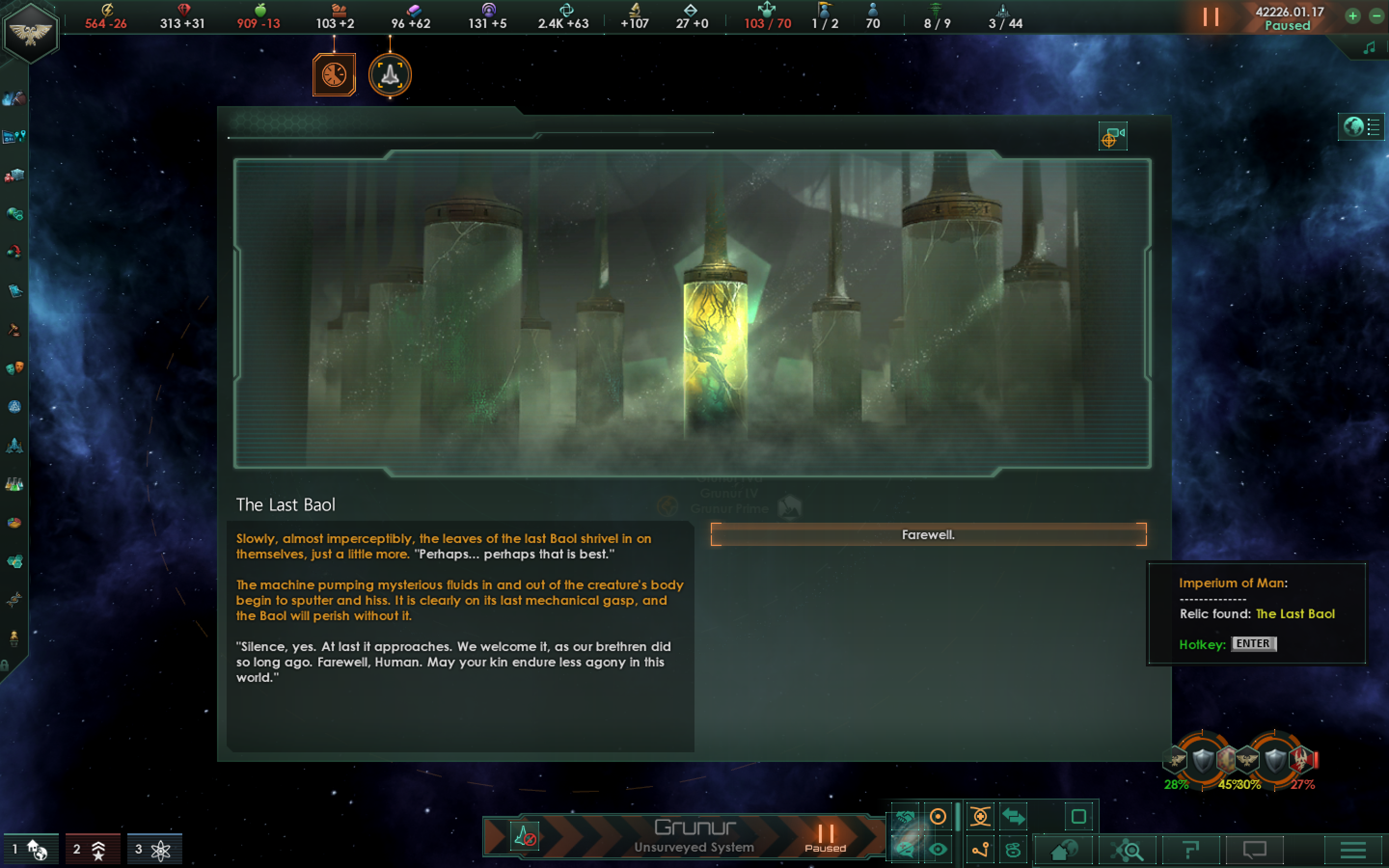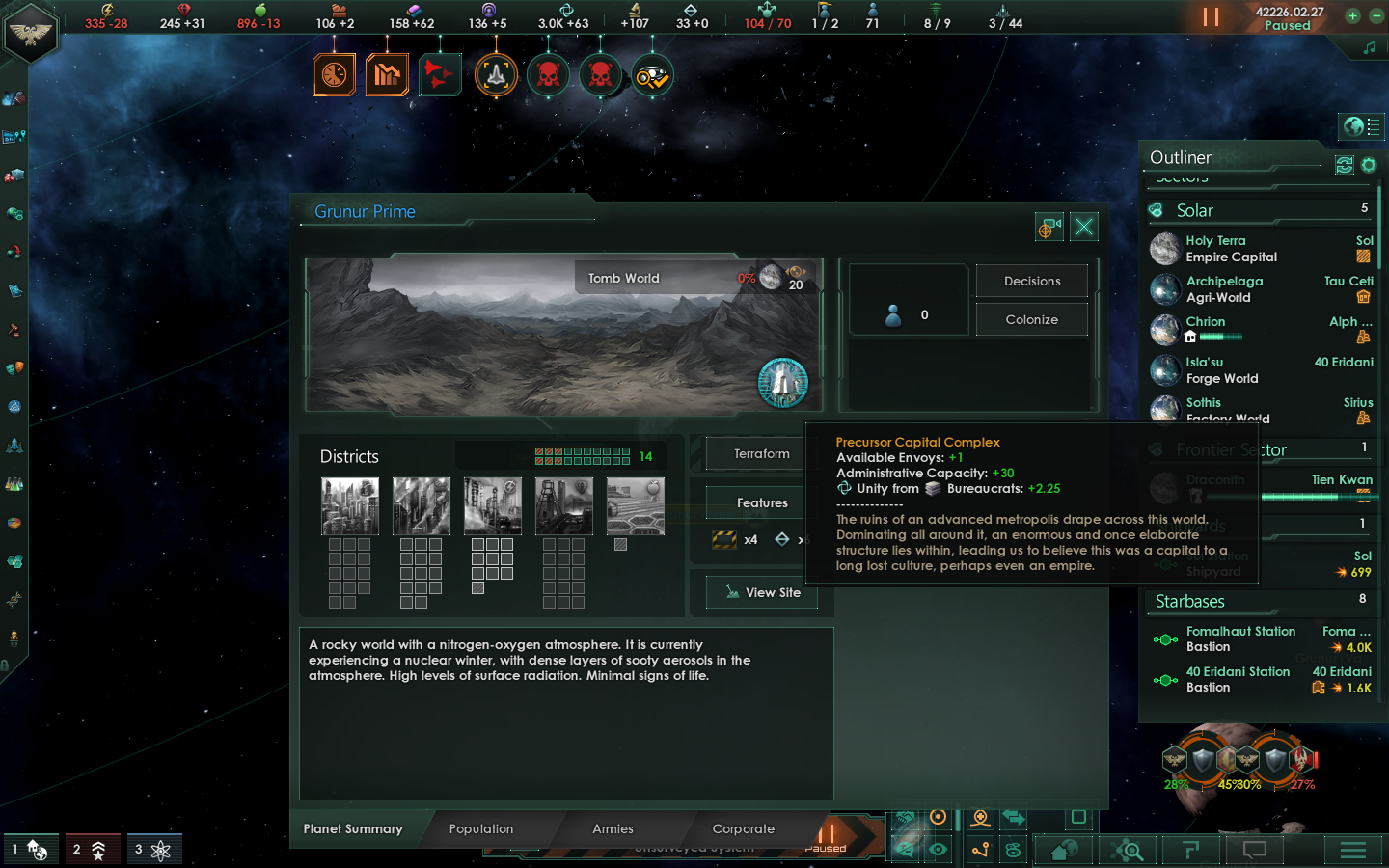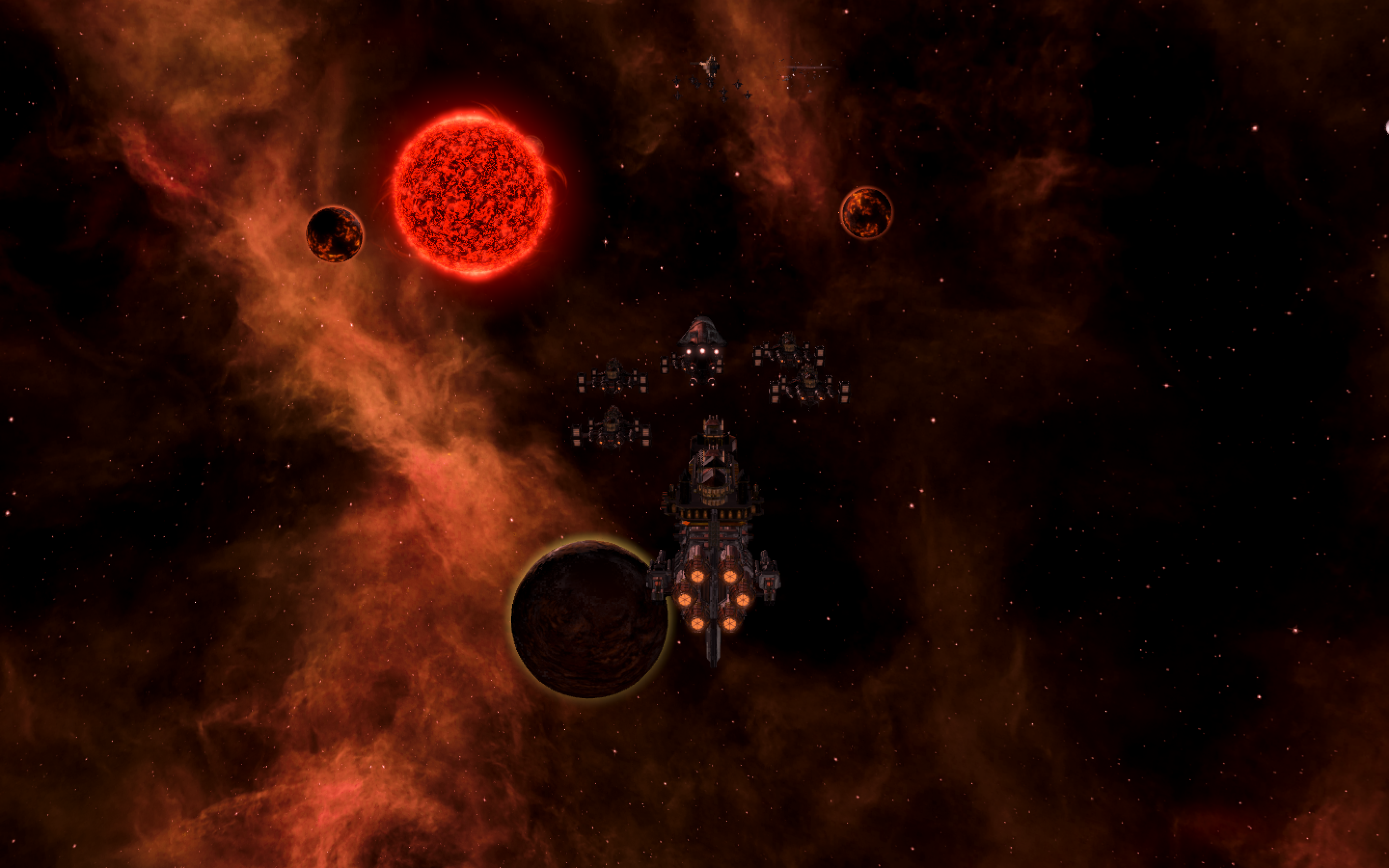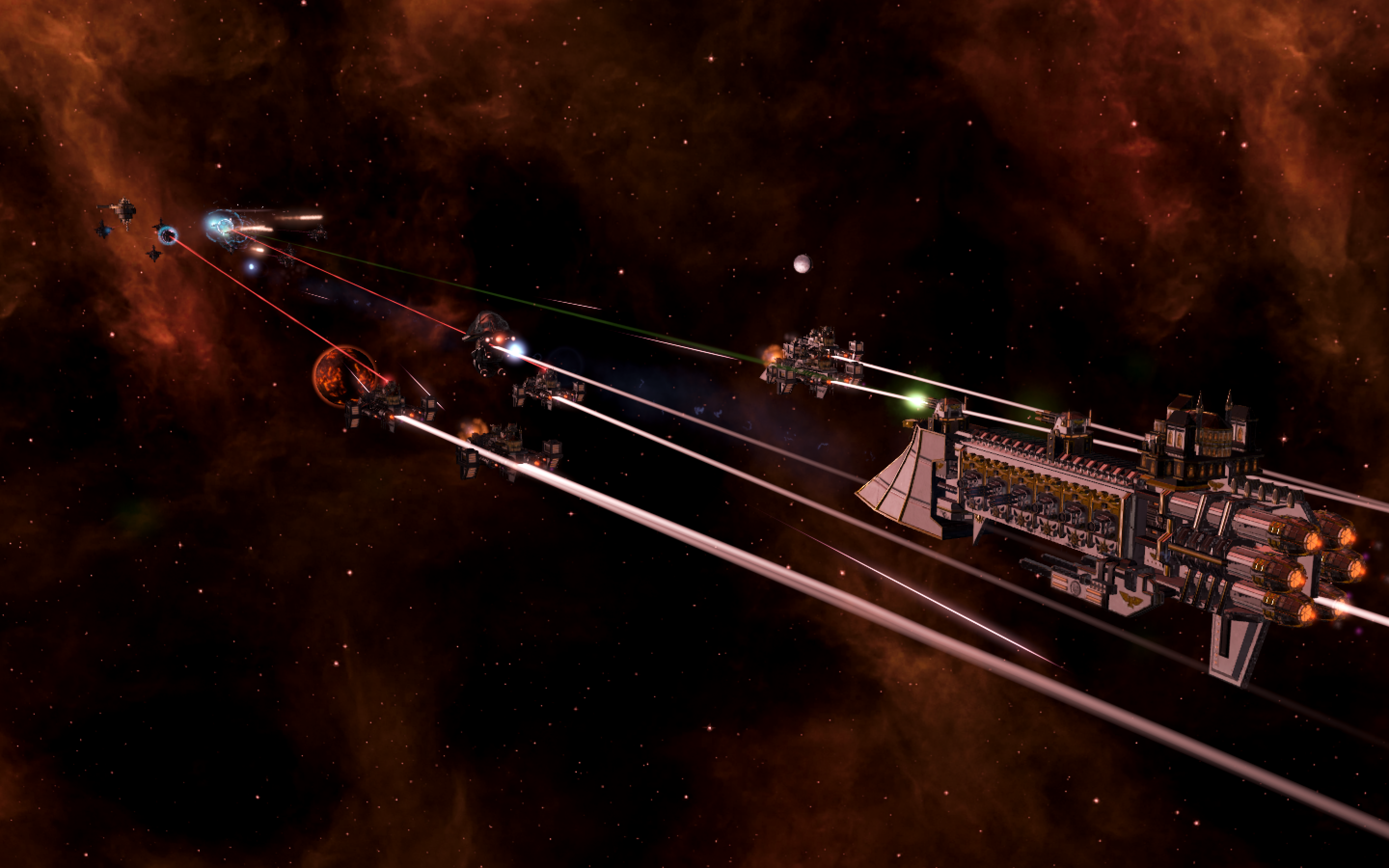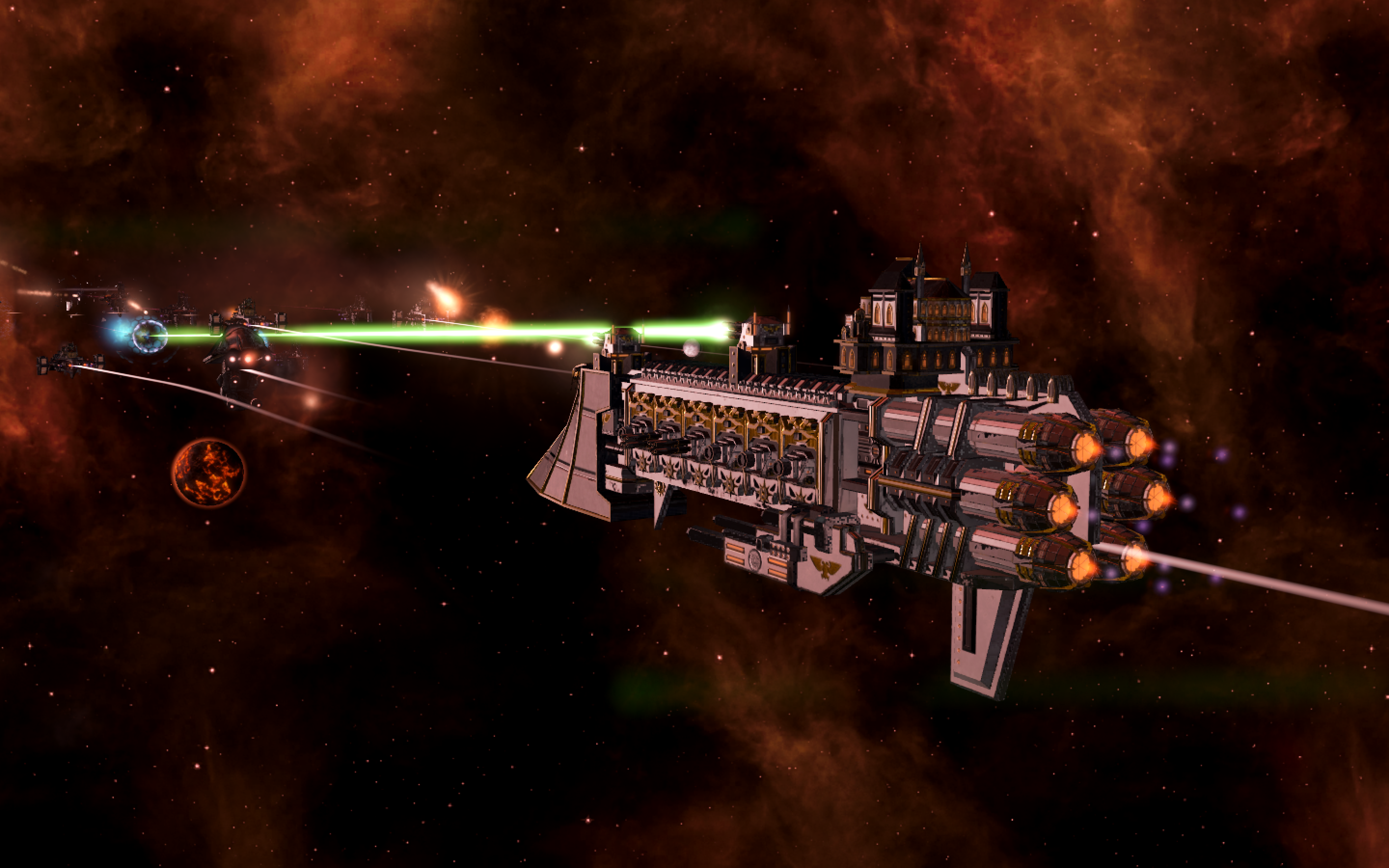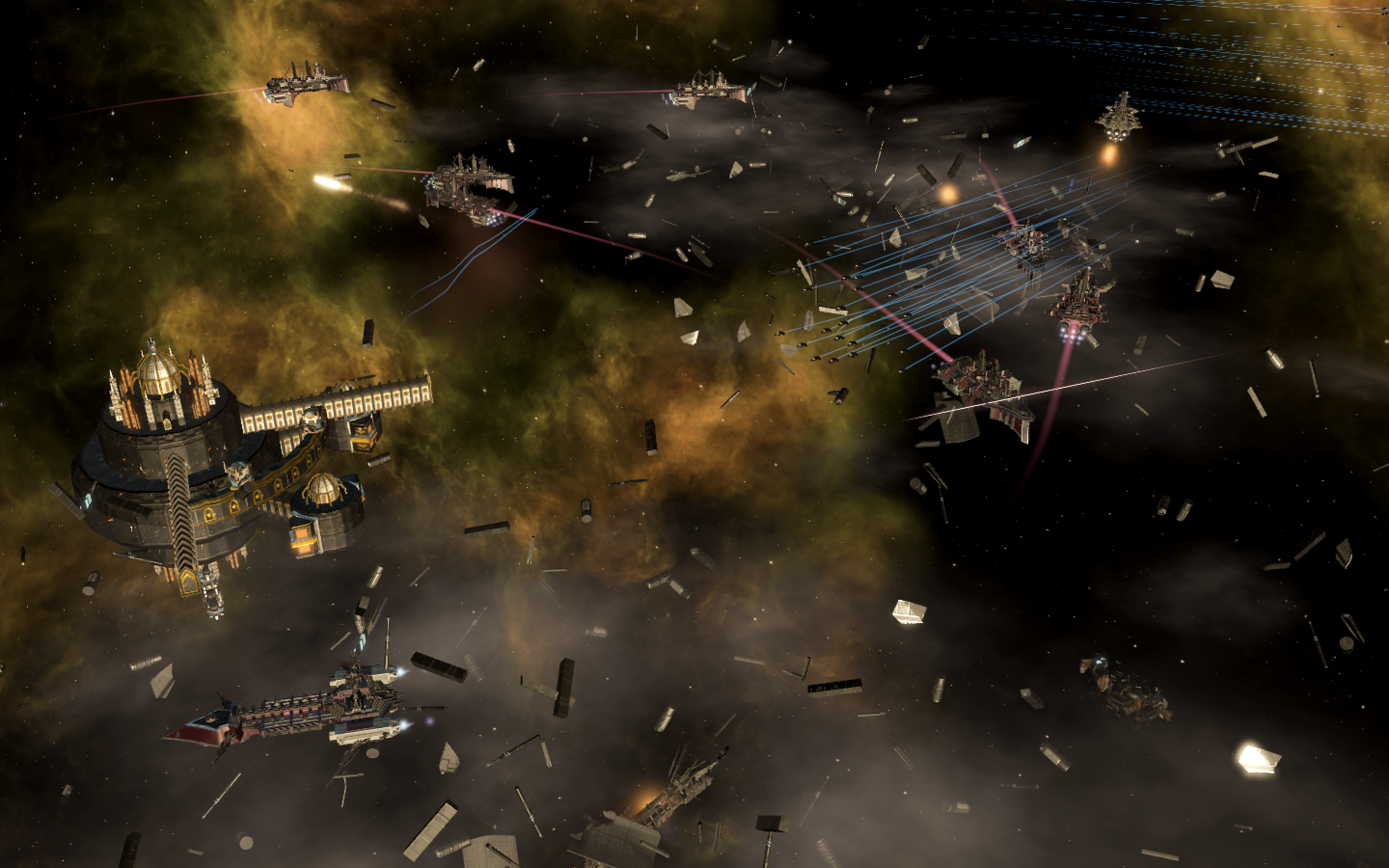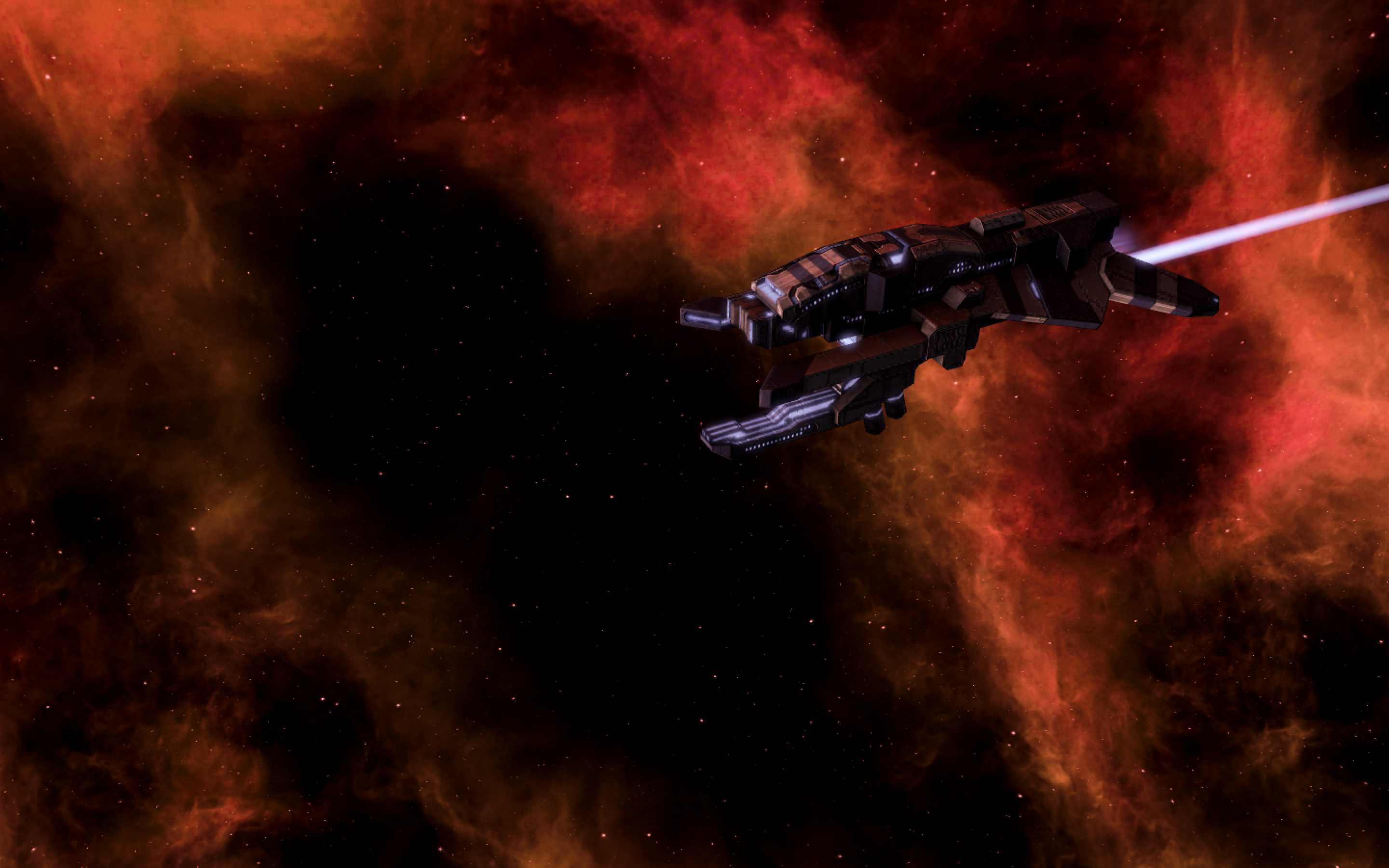The Imperium of Man, as it was, has fallen. Centuries ago, the raging Warp Storms that cut across the galaxy encroached on the Sol System and Holy Terra itself, the heart of the Imperium. The rest of the Imperium was immediately cut off from the light of the Astronomican, the psychic manifestation of the Emperor’s will, at the time the only reliable guide to ships traveling between star systems through the horrors of the daemon-infested Warp. Isolated and with no means of calling for help, the countless worlds of the Imperium were each swallowed up by the darkness, one by one.
In the Sol System, the situation was no less dire. Traitor Legions and the daemons of the four Chaos Gods, Khorne, Tzeentch, Nurgle, and Slaanesh, descended upon the defenders of the last bastion of the Imperium and the cradle of humanity itself, their victory certain. The Forge World Principal of Mars, home to the tech-priests of the Adeptus Mechanicus, was scoured of all life by relentless orbital bombardment, and the the Red Planet’s vast Ring of Iron, which had once produced countless ships for the Imperium’s mighty battle fleets, was shattered. On Holy Terra, the invading daemons took to the streets, systematically butchering most of the planet’s inhabitants.
Yet, by the Emperor’s grace, a miracle occurred. To this day, no one knows exactly how, save that it came at a tremendous cost, but the daemons were driven back, and the Warp Storms receded. Humanity had survived, if only barely.
It has been said since time immemorial that it is always darkest before the dawn. Even with the daemon’s retreat, Holy Terra lay in ruins, many of the survivors would subsequently succumb to starvation, and the Emperor’s light would persist only as a flicker next to its former radiance, sufficient to prevent further daemonic incursions into the Sol System, but inadequate for supporting interstellar travel. That was all that could be managed, with far too few psykers among the survivors left to sustain any greater exertion of the Emperor’s will. And even that would not last forever. The Golden Throne upon which the Emperor had sat immobile for over 10,000 years had already been gradually failing, but now, the Emperor’s body was in an accelerated state of decline. In other words, the Master of Mankind was dying.
Yet the near-total destruction of the Imperium made possible perhaps a greater miracle still.
After ten thousand years of stagnation, the Imperium began to reform itself.
Change never comes quickly or easily to entrenched institutions, especially those as ossified as the Imperium's, but compared to the ten millennia before, it came at a breakneck pace. Most of the old guard had perished with the sack of Terra, the hardliners disproportionately among them. It was a fact that was taken as a sign by the people of Terra that the hardliners had lost the Emperor’s favor, and many came to interpret the sack as a divine punishment casting down those who had become complacent in the face of humanity’s many foes. Of course, the surviving hardliners were not about to surrender their power willingly, and so a bloody civil war ensued on Terra itself.
Opposing the hardliners were a new guard, first and foremost pragmatists. Some were loyalists of the vanished Lord Commander Guilliman, who had once ruled the prosperous realm of Ultramar within the greater Imperium, bringing to it a standard of living and industrial might rivaling most other sectors. Guilliman had tried to reform the Imperium during his tenure as Lord Commander, but even he, the Emperor’s Avenging Son, had struggled against the inertia inherent in its systems. Others were followers of the Archmagos Dominus, Belisarius Cawl, also lost to an unknown fate, who had pursued technological innovation when his fellow tech-priests in the Adeptus Mechanicus had shunned it in favor of slavish adherence to tradition and ritual. They were joined by certain Radicals within the Inquisition, who finally saw their chance to tear down the corrupt edifices that had contributed to the Imperium’s fall, so it could be rebuilt anew, as the shining beacon of progress that the Emperor had clearly intended. Those who stubbornly clung to the past were the true heretics, who had perverted the Emperor’s grand vision, and so they would be put to the sword and consigned to the flames, for the good of mankind.
The regime that emerged still called itself the Imperium of Man, and saw a continuation of many of its institutions, but all that did were changed, whether in ways subtle or profound. Driven on by revanchist fervor, and the need to deliver results, lest humanity face extinction, it began a program of scientific research under the auspices of a reconstituted and now Cawlite-dominated Adeptus Mechanicus. The old method of Warp Drive-based travel was no longer viable with the dimmed light of the Astronomican, and most of the Navigator families, who had been able to perceive its light, had been wiped out by the daemons of Chaos during the Sack of Terra. Moreover, the Cawlite-led Mechanicus was keenly aware that having a single point of failure was what had led to the downfall of the Old Imperium. The Hyper Drives that were the fruit of their research bypassed the roiling miasma of the daemon-infested Immaterium, following stable “hyperlanes” that existed at fixed points between star systems. While they could not yet match the speed of the Old Imperium’s Warp Drives, Hyper Drive travel promised to be far safer and more reliable than Warp travel had ever been.
And so, on 01.01.200M43, also known as the year 42,200 in the 43rd Millennium, the reborn Imperium of Man, or as it would sometimes be called, the "Imperium Reformatus", took once more to the stars, ready to reclaim the galaxy for human dominion.

It might not have actually been 200.M43. Even back in the days of Lord Commander Guilliman, the Imperial Calendar had been discovered to be so riddled with errors and deliberate alterations, that the nominal date might have been off from the actual one by a millennium in either direction. In the darkness following the Sack of Terra, the true date was even less certain. While the Imperium Reformatus held that it had been several centuries since the Sack, it could have really been far longer than that. But from now on, it would be considered 200.M43 nevertheless.
And in truth, quibbling over the exact year was a luxury few could afford. For while the Imperium Reformatus was quite different from the previous incarnation of the Imperium of Man in many respects, humanity’s many foes were still certainly out there, waiting to strike should it show any weakness.
As ever in the grim dark future, there would only be war.
In the Sol System, the situation was no less dire. Traitor Legions and the daemons of the four Chaos Gods, Khorne, Tzeentch, Nurgle, and Slaanesh, descended upon the defenders of the last bastion of the Imperium and the cradle of humanity itself, their victory certain. The Forge World Principal of Mars, home to the tech-priests of the Adeptus Mechanicus, was scoured of all life by relentless orbital bombardment, and the the Red Planet’s vast Ring of Iron, which had once produced countless ships for the Imperium’s mighty battle fleets, was shattered. On Holy Terra, the invading daemons took to the streets, systematically butchering most of the planet’s inhabitants.
Yet, by the Emperor’s grace, a miracle occurred. To this day, no one knows exactly how, save that it came at a tremendous cost, but the daemons were driven back, and the Warp Storms receded. Humanity had survived, if only barely.
It has been said since time immemorial that it is always darkest before the dawn. Even with the daemon’s retreat, Holy Terra lay in ruins, many of the survivors would subsequently succumb to starvation, and the Emperor’s light would persist only as a flicker next to its former radiance, sufficient to prevent further daemonic incursions into the Sol System, but inadequate for supporting interstellar travel. That was all that could be managed, with far too few psykers among the survivors left to sustain any greater exertion of the Emperor’s will. And even that would not last forever. The Golden Throne upon which the Emperor had sat immobile for over 10,000 years had already been gradually failing, but now, the Emperor’s body was in an accelerated state of decline. In other words, the Master of Mankind was dying.
Yet the near-total destruction of the Imperium made possible perhaps a greater miracle still.
After ten thousand years of stagnation, the Imperium began to reform itself.
Change never comes quickly or easily to entrenched institutions, especially those as ossified as the Imperium's, but compared to the ten millennia before, it came at a breakneck pace. Most of the old guard had perished with the sack of Terra, the hardliners disproportionately among them. It was a fact that was taken as a sign by the people of Terra that the hardliners had lost the Emperor’s favor, and many came to interpret the sack as a divine punishment casting down those who had become complacent in the face of humanity’s many foes. Of course, the surviving hardliners were not about to surrender their power willingly, and so a bloody civil war ensued on Terra itself.
Opposing the hardliners were a new guard, first and foremost pragmatists. Some were loyalists of the vanished Lord Commander Guilliman, who had once ruled the prosperous realm of Ultramar within the greater Imperium, bringing to it a standard of living and industrial might rivaling most other sectors. Guilliman had tried to reform the Imperium during his tenure as Lord Commander, but even he, the Emperor’s Avenging Son, had struggled against the inertia inherent in its systems. Others were followers of the Archmagos Dominus, Belisarius Cawl, also lost to an unknown fate, who had pursued technological innovation when his fellow tech-priests in the Adeptus Mechanicus had shunned it in favor of slavish adherence to tradition and ritual. They were joined by certain Radicals within the Inquisition, who finally saw their chance to tear down the corrupt edifices that had contributed to the Imperium’s fall, so it could be rebuilt anew, as the shining beacon of progress that the Emperor had clearly intended. Those who stubbornly clung to the past were the true heretics, who had perverted the Emperor’s grand vision, and so they would be put to the sword and consigned to the flames, for the good of mankind.
The regime that emerged still called itself the Imperium of Man, and saw a continuation of many of its institutions, but all that did were changed, whether in ways subtle or profound. Driven on by revanchist fervor, and the need to deliver results, lest humanity face extinction, it began a program of scientific research under the auspices of a reconstituted and now Cawlite-dominated Adeptus Mechanicus. The old method of Warp Drive-based travel was no longer viable with the dimmed light of the Astronomican, and most of the Navigator families, who had been able to perceive its light, had been wiped out by the daemons of Chaos during the Sack of Terra. Moreover, the Cawlite-led Mechanicus was keenly aware that having a single point of failure was what had led to the downfall of the Old Imperium. The Hyper Drives that were the fruit of their research bypassed the roiling miasma of the daemon-infested Immaterium, following stable “hyperlanes” that existed at fixed points between star systems. While they could not yet match the speed of the Old Imperium’s Warp Drives, Hyper Drive travel promised to be far safer and more reliable than Warp travel had ever been.
And so, on 01.01.200M43, also known as the year 42,200 in the 43rd Millennium, the reborn Imperium of Man, or as it would sometimes be called, the "Imperium Reformatus", took once more to the stars, ready to reclaim the galaxy for human dominion.

It might not have actually been 200.M43. Even back in the days of Lord Commander Guilliman, the Imperial Calendar had been discovered to be so riddled with errors and deliberate alterations, that the nominal date might have been off from the actual one by a millennium in either direction. In the darkness following the Sack of Terra, the true date was even less certain. While the Imperium Reformatus held that it had been several centuries since the Sack, it could have really been far longer than that. But from now on, it would be considered 200.M43 nevertheless.
And in truth, quibbling over the exact year was a luxury few could afford. For while the Imperium Reformatus was quite different from the previous incarnation of the Imperium of Man in many respects, humanity’s many foes were still certainly out there, waiting to strike should it show any weakness.
As ever in the grim dark future, there would only be war.
Last edited:
- 2
- 1


